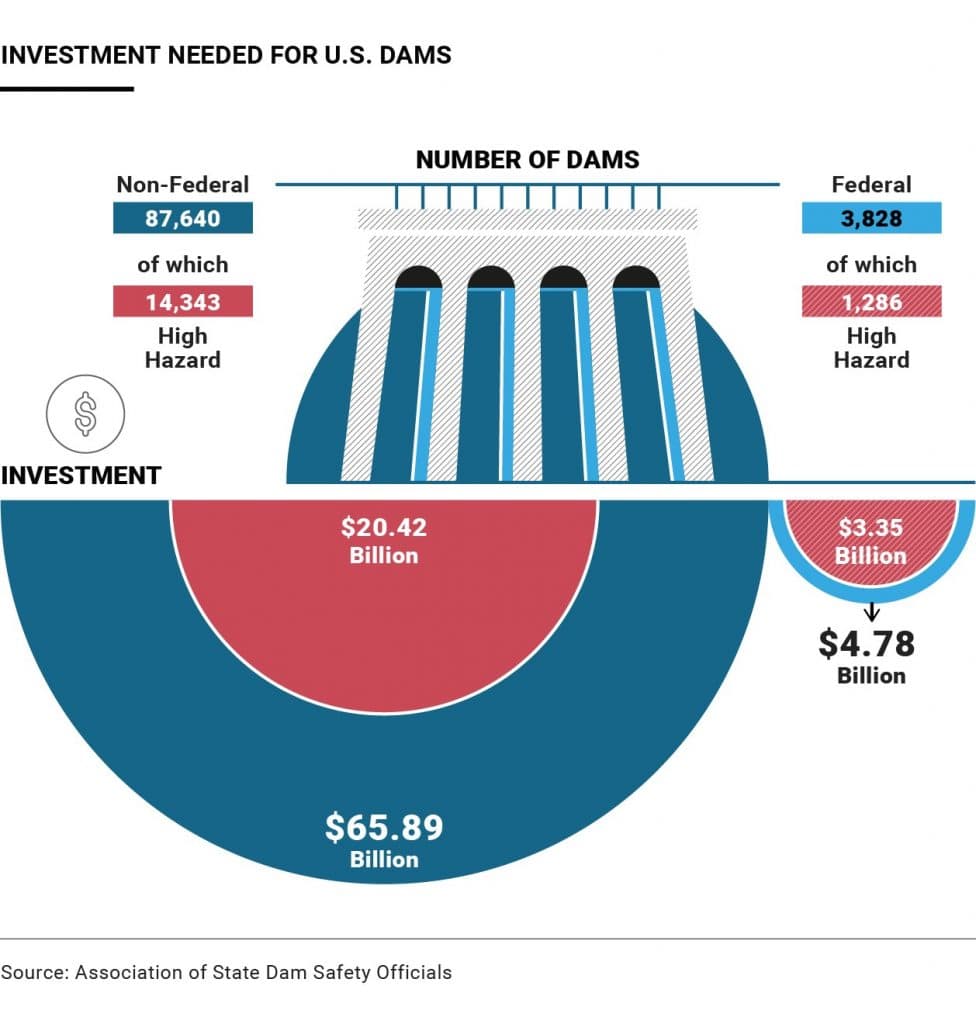
The United States will need to spend more money than previously estimated to repair tens of thousands of dams, some of which are in such poor shape that they pose a risk to the lives of those who live and work near them.
Sounding the alarm is the Association of State Dam Safety Officials (ASDSO) with the publication of its latest report on the state of the sector, “The Cost of Rehabilitating Our Nation’s Dams”.
Dam Safety Day
The ASDSO published the report ahead of National Dam Safety Awareness Day on May 31, which this year marks the 130th anniversary of the collapse of the South Fork Dam near Johnstown, Pennsylvania. Some 2,200 people died as a result.
Based on a revised database of the U.S. Army Corps of Engineers, the ASDSO estimates that the country needs to spend more than $70 billion to rehabilitate dams.
It raised by about $10 billion the estimate from the one in the previous version of the report because the database came to include more non-federal dams, resulting in a total of more than 87,600. Non-federal dams are those that lie beyond the responsibility of the federal government. That means most of the dams in the country.
The ASDSO raised the estimate also because it decided to include the cost of rehabilitating dams that fall under the federal government’s purview.
The figure includes $65.89 billion for non-federal dams against a previous estimate of $53.69 billion.
The one for federal dams, meanwhile, is $4.78 billion.
The ASDSO also addresses the cost of rehabilitating dams considered high hazard. Although the label does not mean they are a risk to people’s lives, their failure or collapse would have a significant impact on the economy of the area they serve.
The amount of money the ASDSO calculates is necessary to rehabilitate non-federal dams of this kind is $20.42 billion and $3.35 billion for federal ones.
The alarm that the ASDSO has raised comes as U.S. President Donald Trump’s administration is in talks with the opposition Democratic Party on a plan to invest in infrastructure.

Dams: A U.S. Heritage
The United States has about 90,000 dams. Some states have hundreds if not thousands of them.
Their average age is 56 years, and the demands placed on them by the rise in population and economic development is contributing to their ageing faster.
The ASDSO identifies more than 15,500 dams as having the potential of being high hazard in 2018.
The role of the private sector
The alarm that the ASDSO has sounded is not just directed towards the state and federal governments but also private investors in light of the fact that more than half of the dams are privately owned.
The risks they pose, however, is very public.
The Federal Emergency Management Agency (FEMA) calculates that 56.4% of dams are privately owned, 24.9% are managed by local entities and state governments, 2.4% by public utilities and 4.7% by the federal government. The remaining 11.6% of the owners was not defined.
In order to support the rehabilitation of these dams, FEMA proposes private-public partnerships. It harks back to the 2002 Dam Safety and Security Act, but even this is but a partial solution given the fact that the sector is in urgent need of a massive investment.


